Charging an electric vehicle
Charging your EV is as easy as charging your phone, or plugging in the toaster
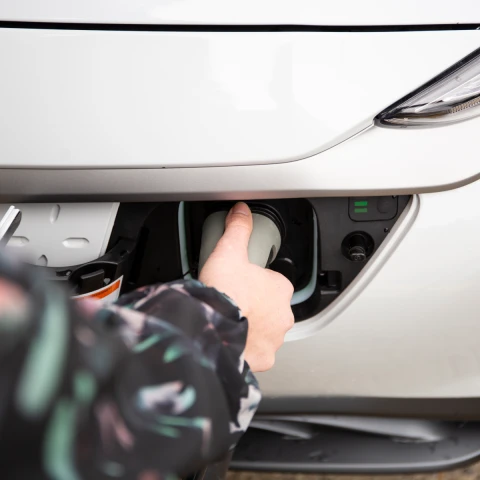
Charging your EV is as easy as charging your phone, or plugging in the toaster
We’ve broken down the types of chargers available - home and public charging, as well as what charging your EV will cost you. Spoiler: not much.
One of the many advantages to driving an EV is charging from the comfort of your own home – and getting up in the morning to a ‘full tank’. Here’s everything you need to know about charging your EV at home.
Most electric cars come with their own portable charger, which, like all the other electrics in your house, can be plugged into a normal power point. These types of chargers should have an in-cable control and protection device (ICCPD). Never, ever (ever!) use a charger without an ICCPD – it’s risky business.
If you’ve got a spot in your garage or around the house that’ll fit a wall mounted charging unit, this is a great way to charge your electric car way more efficiently than through a standard plug.
Wall chargers can cost you anywhere from $1,300 to $3,000 (excluding installation).
While driving an EV helps take care of the environment, when it comes to charging it’s important you look after yourself, too. We’ve got to play it safe when electrics are involved! Download our safe charging tips for advice on what to ask your charger supplier, getting chargers installed by a registered electrician, and the safety standards that your charger should meet.
If you find your EV short of charge when you’re out in town or on a roadie, no worries. Range anxiety is becoming less and less of a thing with the amount of public electric car charging stations popping up around the country – and we’re playing a big part in this.
We’ve launched our own network of chargers across the country, named Zero. Once completed, Zero will be one of the biggest destination charging networks in Aotearoa. Learn all about Zero and find your closest Zero charger here. Why not download the Zero app so you are ready to go when you need one.
Alternatively, PlugShare has the full list of chargers across the country – just use the map to find one near you. If you’re on a roadie, it’s a good idea to plan ahead and see how far you’ll make it before you need to plug in.
Generally, a lot of public charging stations use rapid DC chargers which will get you back on the road within about half an hour. It’s a good time to stretch your legs and grab a coffee to recharge yourself, too. There are slower AC chargers that you can encounter across Aotearoa, such as those offered at shopping centres or tourist spots.
| Use | For private car owners, used in the home or as a back-up while on the road |
| Charging time | Trickle AC charge: 12-14 hours |
| Power | AC: 1.75kW |
| Use | Fast charging in the home Business fleet charging |
| Charging time | Fast AC charge: 4 hours |
| Power | AC: 7-22kW |
| Use | For public use |
| Charging time | Fast AC charge: 4 hours Rapid DC charge: 45 mins |
| Power | AC: 7-22kW DC: 50kW+ |
AC stands for alternating current, and DC stands for direct current.
The power that we get from the electricity grid is AC power, but EV batteries can only store DC power. So, AC power needs to be converted to DC in order to charge your car. The difference between AC and DC chargers is where that conversion takes place – inside or outside the car.
Electric vehicles all have in-built converters that convert the AC power to DC power. So, when you plug into an AC charger, your car’s converter will convert the power to DC power so it can be stored in the battery.
DC chargers are an amazing thing, because the charger has already converted the power from AC to DC before it reaches the car. So, it can feed the power into the car’s battery directly. That means less work for your EV, and a far quicker charge.
AC charging is the best choice for local driving, because you can charge in places that you already plan to spend time – like the supermarket, malls or near your local cafe. DC charging is the best choice for when you want to get back on the road quickly.
If you’re like most Kiwis, who average around 25-35km of driving per day, it’ll cost around $4-6 per 100km (the equivalent of paying $0.40-$0.60 for a litre of petrol) to charge at home. If you’re fast charging, that can go up to around $15 for 100km.
These are ballpark figures – factors like how far you drive, and the type of driving you do (around town, hills, motorways) all play a part. Regardless – you’re looking at some serious savings compared to filling up with petrol or diesel.
Read more: here’s a breakdown of the full cost of an EV.
Thinking of making switch? We’ve got info on what they cost, why they’re great and heaps more to help you on your journey
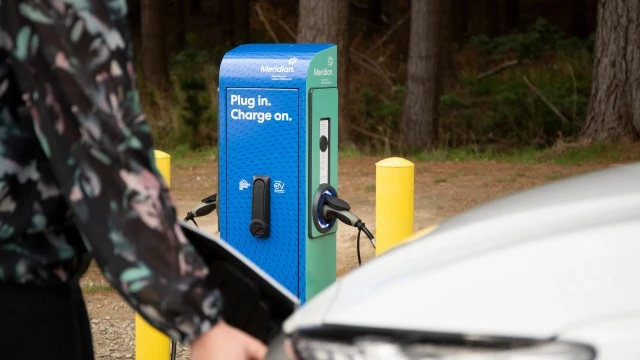
How much does it cost to buy an EV? And how much does it cost to charge?
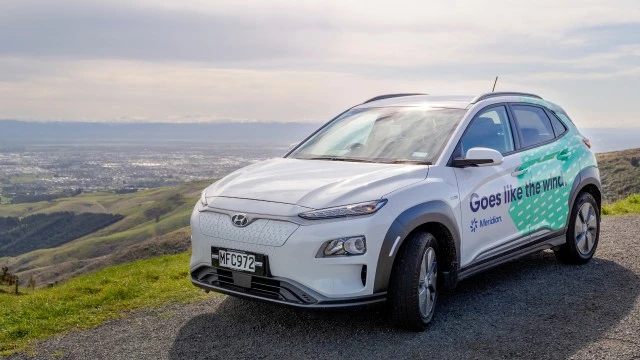
There are heaps of benefits to driving an electric vehicle. We’ve narrowed it down to the top six reasons to go electric.
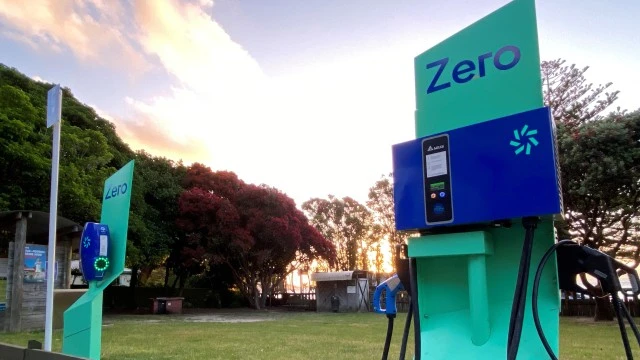
It’s no secret that we’re excited about electric vehicles – so excited that we’re building one of the country’s largest EV charging networks!
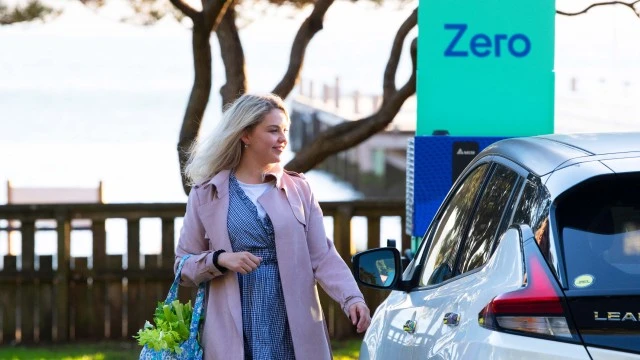
Wondering what the difference is between hybrid and fully electric cars? We’ve listed the pros and cons for both.